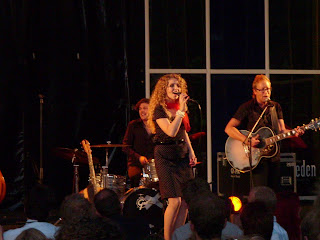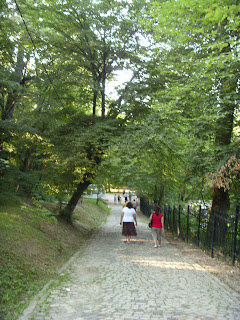Aalborg is a city in Denmark having 122,461 inhabitants and being the fourth largest city in the country after Copenhagen, Aarhus, and Odense. It is located by the Limfjord and was an important harbour during the Middle Ages, and an industrial centre later. Today the city is in a transition from a working-class, industrial city to a knowledge-based one.
Aalborg is located 120 kilometres north of Aarhus and 414 kilometres (by Great Belt Fixed Link) to Copenhagen.
The old Aalborghus Castle (Aalborghus Slot) and some picturesque houses of the 17th century can be seen in the center of the town. The half-timbered (bindingsværk) castle was built in 1550 by King Christian III, and was converted to government administration offices in the 1950. Jens Bang's House, a five story building built in 1624 by the merchant Jens Bang is an example of Renaissance architecture. It is located on Nytorv next to the old Town Hall. The present Budolfi Church was built at the end of the 14th century, although at least two earlier churches stood on the same spot. Budolfi Church was just a parish church until it became the seat of the Lutheran bishop of Aalborg in 1554.
Vor Frue Kirke ("Church of Our Lady") is a relatively modern church. The original Church of Our Lady from the early 1100s was pulled down after the Reformation because it was so old and unstable. The newer building in a different location was partially burned in 1894. Underneath the main pedestrian shopping street is a newly opened museum of the excavation of a monastery from the 11th century. Nørresundby is the site of the Lindholm Høje settlement and burial ground from the Germanic Iron Age and Viking times. There is also a museum on the site.
Aalborgtårnet is a tripod tower erected in 1933. The tower still gives an exquisite view over the fjord and the city from its 105 m rise over the sea level. Near the Aalbor Tower you find KUNSTEN Museum of Modern Art Aalborg an art museum built in 1972 designed by the Finnish architect Alvar Aalto. In 2008 the Utzon Center, dedicated to the work of the noted architect Jørn Utzon, was built next to the Limfjord at the central harbour front in Aalborg.
Nordkraft is a cultural centre in a former power plant near the harbour. It has theatres (opening in 2010), a cinema, concert facilities. In its neighbourhood a classical concert hall, Musikkens Hus and so one.
One of the most popular and famous streets in Aalborg, possibly even in Denmark, is Jomfru Ane Gade, or simply just Gaden ("The Street"). The name translates to "Mistress' Anne's Street" in English. The pubs and restaurants on this street offer beer and other spirits for some of the most competitive prices in Denmark. Jomfru Ane Gade is a café and restaurant street during day which, at night, turn into clubs, discos and bars. During the 1990s the street was infamous for being a 'hang out' of two biker gangs who were at war for some years all over Scandinavia, but as the bikers disappeared from the street it became even more popular among people of all ages. During the day, tourists and employees in the city come to Jomfru Ane Gade, especially for its restaurants. In the afternoons some of the cafés open. Around 11 pm the mood of the street changes into more of a party street when younger people arrive.
The annual Aalborg Carnival takes place in the weekend of week 21 (usually the last week in May). The Carnival is actually three events, the children's carnival (Børnekarneval), the battle of carnival bands, and the carnival itself. During the carnival, Aalborg receives about 100,000 people. The Carnival ends with a grand firework display.
























































